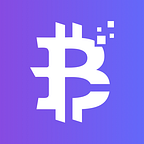DeFi Series 3: Features of DeFi
Based on DeFi’s underlying architecture and infrastructure, developers will be able to create and combine complex dApps, which have an all-around advantage over centralized applications in numerous application scenarios.
Transactions
The transaction process on the blockchain includes sending data or tokens from one address to another. Among all blockchain interactions, transactions are the starting point of any kind of interaction and the atoms that make up the DeFi system.
Transactions are indivisible (atomic), and in a smart contract, certain terms may cause a transaction to fail, thereby undoing all the previous steps of the transaction. Therefore, the indivisibility of a transaction requires that either all steps are completed or all steps are withdrawn, not just one or two. This means that funds can be transferred between many contracts (i.e., change hands) and if any of the conditions are not met, the terms of the contract set a retraction, thus ensuring the safety of the funds.
Transactions are subject to transaction fees, and the level of transaction fees depends on the complexity of the transaction. For example, transaction fees are relatively low when ETH is used to package payments, and higher for longer or data-intensive transactions.
Transaction fees are determined by the market, and transactions have to be auctioned in order to move to the next Ether block. Higher transaction fees indicate higher demand and therefore higher priority to be included in the block. The surge in transaction fees means that something very attractive is happening in the market.
Escrow
One of the key features of DeFi is the ability to escrow or hold funds directly in a smart contract. This is clearly different from other protocol standards, like ERC-20, ERC-721, etc. where only authorized transfers can be made. In DeFi, the user not only holds custody of the funds, but can also transfer them or revoke the contract at any time.
When a smart contract holds full custody of funds, new functions are derived, including but not limited to retaining transaction fees and issuing rewards, facilitating token swaps, bonding curve (bonding curve) market making, mortgages, auctions, insurance funds, and more.
In addition, in order to efficiently escrow tokens, contracts are programmed to handle the appropriate type of interface, using ERC-20 for homogenized tokens and ERC-721, ERC-1155, etc. for non-homogenized tokens.
Adjusting supply
Adjusting the supply means raising (minting) or lowering (destroying) the supply of homogenized tokens through smart contracts. Minting (mint) can increase the number of tokens in circulation, and destroying (burn) tokens means removing them from the circulating market.
For minting, any minting mechanism must be directly encoded into a smart contract, and it is often common practice to increase the supply (inflationary rewards) to incentivize users, not only to increase market liquidity, but also to encourage users to use a particular platform. As a result, many users seeking the highest possible rewards engage in liquidity mining (yield farming) also known as revenue farming.
Destroying (burning) tokens is generally done by the creator manually sending them to an unowned address, or creating a contract that holds funds but cannot be spent. Obviously, the act of destruction is similar to the destruction or irreversible loss of money in the traditional financial system. Often, when a smart contract is designed, the creator intentionally includes the ability to destroy tokens as a way to increase their scarcity or to punish malicious behavior.
Incentives
In a crypto-economic system, incentives are important to both encourage (positive incentives) and deter (negative incentives) user behavior. There are typically two forms of incentives, collateralized incentives for smart contracts with escrowed tokens, and direct incentives for users who do not have funds escrowed in the system.
A staking reward is a bonus that accounts for the amount of money a user contributes to the system as collateral. Typically, a minimum threshold is applied to all pledged funds, and the reward token can be the same as the pledge or a different token.
Direct rewards are generally positive incentives related to user behavior, most typically keeper incentives, which are fixed or proportional fees for keepers to perform clearing or updates in the DeFi protocol or other dApps to keep the protocol and application running properly.
In addition, the DeFi system has a slashing feature that clears a portion of a user’s collateral funds as a penalty when the user commits a malicious act. Typically, the liquidation of collateral funds may be due to insufficient collateral, malicious behavior of the user, or market changes that trigger deflation.
About Bitbyte
Bitbyte.finance provides SAAS services for developers in the Web3 space, including Defi&NFT applications, Swap and mining pools, and community traffic services. Bitbyte is committed to helping developers quickly build their own Defi financial ecosystem and lower the barrier for traditional users to migrate to decentralized finance.
